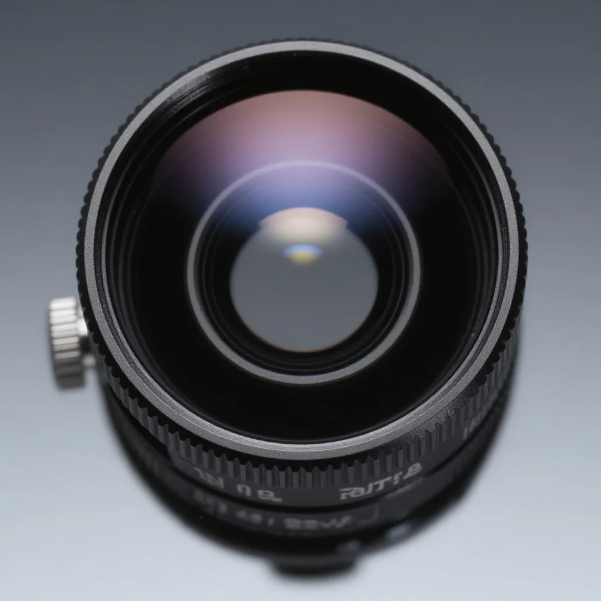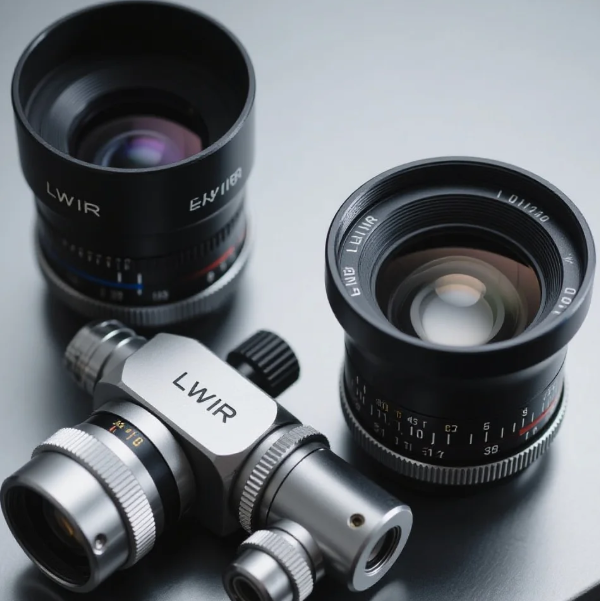Infrared lenses are specialized optical components designed to capture and focus infrared radiation, which lies beyond the visible spectrum at wavelengths typically ranging from 700 nm to 14,000 nm. Unlike standard lenses used for visible light, LWIR lenses and MWIR lenses are engineered to handle specific infrared wavelength bands, such as LWIR (long-wave infrared, 8,000–12,000 nm) and MWIR (mid-wave infrared, 3,000–5,000 nm). These lenses are pivotal in applications like thermal imaging, medical diagnostics, security surveillance, and defense operations. At CNGEIR, our LWIR lenses and MWIR optics are crafted to deliver exceptional clarity and performance, making them indispensable tools across various sectors.
The LWIR meaning refers to the long-wave infrared spectrum, where thermal radiation from objects is most prominent, especially at room temperature. LWIR lenses capture this thermal energy and focus it onto a detector to create detailed thermal images. Similarly, MWIR lenses are optimized for higher-temperature objects, such as engines or fire sources, where thermal radiation peaks in the mid-wave infrared range.
The process begins when infrared radiation emitted or reflected by an object passes through the lens. The lens, made from materials like germanium or zinc selenide, bends the infrared light to converge at a focal point, forming an image on the camera’s sensor. CNGEIR’s LWIR zoom lenses and MWIR lenses are designed to minimize aberrations and ensure high-resolution imaging, even in challenging environments like fog or smoke, where LWIR lenses excel due to their ability to penetrate such conditions.
An infrared lens comprises several key components, each contributing to its functionality:
Focus Adjustment Ring: Allows precise focusing by adjusting the distance between the lens and the object, known as the working distance.
Aperture Adjustment Ring: Controls the F-number, regulating light intake and influencing image quality.
Camera Mount: Connects the lens to the camera, with common types including C-Mount and F-Mount.
Lens Barrel: Houses critical information like focal length and F-number, ensuring easy identification.
CNGEIR’s LWIR lenses and MWIR optics are designed with user-friendly features, such as lockable thumbscrews to secure focus settings, ensuring stability during critical operations.
CNGEIR offers a range of IR lenses, each optimized for specific wavelength bands and applications:
SWIR lenses operate in the 900–2,500 nm range, ideal for applications like semiconductor inspection and night vision. These lenses collect reflected light, similar to visible light lenses, and are excellent for imaging through smoke or haze.
MWIR lenses, operating between 3,000–5,000 nm, are suited for high-temperature targets like engines or industrial machinery. CNGEIR’s MWIR optics are often paired with cooled detectors to achieve high sensitivity and resolution, making them ideal for military and aerospace applications.

LWIR lenses, covering 8,000–12,000 nm, are the backbone of thermal imaging systems. They excel in detecting room-temperature objects and are widely used in surveillance and medical diagnostics. CNGEIR’s LWIR zoom lenses offer flexibility in adjusting magnification for dynamic monitoring scenarios.

NIR lenses (900–1,700 nm) are used in spectroscopy and laser focusing, supporting applications in medical diagnostics and material analysis.
Lens Type | Wavelength Range (nm) | Key Applications |
|---|---|---|
SWIR | 900–2,500 | Semiconductor inspection, night vision |
MWIR | 3,000–5,000 | Defense, industrial monitoring |
LWIR | 8,000–12,000 | Thermal imaging, surveillance |
NIR | 900–1,700 | Spectroscopy, medical diagnostics |
The performance of LWIR lenses and MWIR lenses depends heavily on the materials used. Common materials include:
Germanium: High refractive index, ideal for LWIR and MWIR applications (2–15 µm transmission).
Zinc Selenide: Offers broad transmission (0.55–18 µm), suitable for both LWIR lenses and MWIR optics.
Chalcogenide Glass: Cost-effective with low dispersion, used in achromatic designs for LWIR zoom lenses.
These materials are chosen for their transparency to infrared wavelengths and ability to correct optical aberrations. CNGEIR carefully selects materials to optimize performance while controlling costs, ensuring our lenses meet diverse application needs.
CNGEIR employs advanced manufacturing techniques to produce LWIR lenses and MWIR lenses with exceptional precision. Our processes include:
Precision Machining: Ensures accurate lens shaping for minimal distortion.
Custom Coatings: Antireflection coatings enhance transmission and durability.
Quality Control: Rigorous testing guarantees performance across specified wavelength ranges.
Our LWIR zoom lenses are designed with large apertures (F/1–2) to minimize noise, while MWIR optics often incorporate cooled detectors for superior image quality in high-end applications.
CNGEIR’s LWIR lenses and MWIR lenses support a wide range of applications:
Medical Diagnostics: LWIR lenses enable non-invasive thermal imaging to detect inflammation or circulatory issues.
Security and Surveillance: LWIR zoom lenses provide clear imaging in low-visibility conditions, ideal for night vision and border monitoring.
Defense: MWIR optics are critical for long-range surveillance and target acquisition in military operations.
Industrial Inspection: Both LWIR and MWIR lenses are used to monitor equipment temperature and detect faults.
At CNGEIR, we offer both custom and stock LWIR lenses and MWIR lenses to meet varied needs. Our custom solutions include:
Tailored Designs: Optimized for specific wavelengths, focal lengths, and sensors.
Specialized Coatings: Enhance performance in harsh environments.
Material Flexibility: Options like germanium, zinc selenide, or chalcogenide glass.
Our stock lenses provide cost-effective solutions for immediate deployment, ensuring high performance across industries.
The future of LWIR lenses and MWIR optics is promising, with advancements in:
Miniaturization: Smaller, lighter lenses for portable devices like drones.
Multi-Spectral Imaging: Lenses capturing multiple IR bands for enhanced analysis.
AI Integration: Intelligent algorithms improving target detection and image processing.
CNGEIR is at the forefront of these innovations, developing LWIR zoom lenses and MWIR lenses that push the boundaries of infrared technology.
Infrared lenses, particularly LWIR lenses and MWIR lenses, are transforming industries by enabling precise thermal imaging and detection. At CNGEIR, we are committed to providing high-quality LWIR zoom lenses and MWIR optics that meet the unique needs of our clients. Whether you require stock lenses for immediate use or custom solutions for specialized applications, visit https://www.cngeir.com/ to explore our offerings. Contact us today for a consultation or quote to elevate your infrared imaging capabilities.
 Call us on:
Call us on:  Email Us:
Email Us:  No.9 Zhongxing East Road, Lishui Economic Development Zone, Nanjing, Jiangsu, China
No.9 Zhongxing East Road, Lishui Economic Development Zone, Nanjing, Jiangsu, China